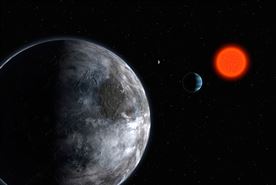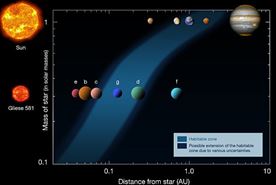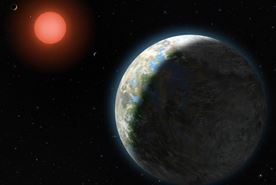YOLA 07A: A New Planet Is Discovered - p2
Noun
the basic structures that are needed for something to function properly
infrastructure
Gliese 581c skims the near side of the habitable zone, but scientists suggest that it does not have enough of a toehold in this zone to provide a stable infrastructure for organic formations.
Gliese 581c skims the near side of the habitable zone, but scientists suggest that it does not have enough of a toehold in this zone to provide a stable infrastructure for organic formations.
Verb
to say that (something) is larger or greater than it really is
overstated
The comparisons between the Earth and Gliese 581g should not be overstated, however. Even if Gliese 581g can sustain organisms, it would be a very different place to live.
The comparisons between the Earth and Gliese 581g should not be overstated, however. Even if Gliese 581g can sustain organisms, it would be a very different place to live.
Noun
the force of attraction that bodies exert on one another as a result of their mass
gravitational pulls
Because Gliese 581 is only 1% as bright as the Sun, it exudes little warmth, and its habitable zone lies much closer. At this distance, planets get locked into strong gravitational pulls that tend to slow their rotation.
Because Gliese 581 is only 1% as bright as the Sun, it exudes little warmth, and its habitable zone lies much closer. At this distance, planets get locked into strong gravitational pulls that tend to slow their rotation.








